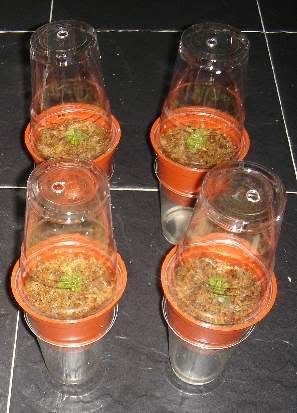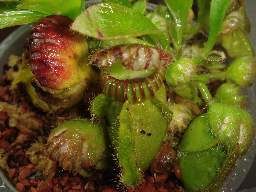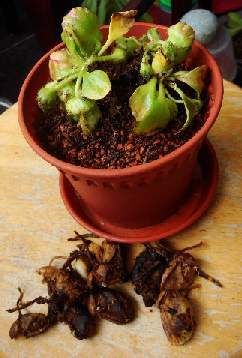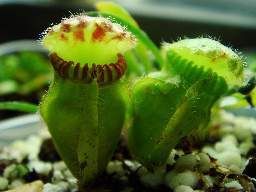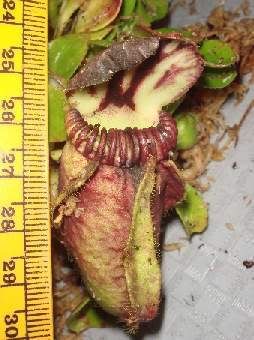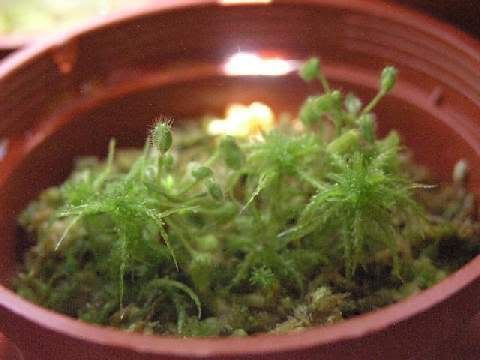Post by David on Aug 6, 2007 9:36:06 GMT 8
Author: Cindy
Cephalotus is not difficult to grow in Singapore. Having more heat resistant clone helps. On top of that, cooling is important.
Growers who provide even a night drop with air-condition (~23-25degC) have larger pitchers. With heat somehow the pitchers remain small but there are plenty of off shoots. Mine largest plant is a clump of at least 50 pitchers. But they are all 1cm and less.
Another grower who sleep in air-con at 16degC has got much fewer pitchers...at most 10...but they are looking like mature pitchers already. Mine did produce ONE adult pitcher during the cooler months last year but then again, my Cephs are all at my balcony which faces North-West. From 3pm onwards, it becomes very hot.
I water my Cephs only about 2-3 times a week. There are a few pots of them in different media. Peat/sand, peat/coarse sand, LFS/coarse sand, LFS/perlite...I don't see a difference in the mix although I was advised by the donor never to use LFS. My largest clump happens to be in LFS/perlite. Perhaps because I am careful with watering, the mix still works.
They have been with me for 1.5 years already and I have not lost a single plant.
As for light, Cephs do well in bright shade. No need for direct sunlight at all. The more light, the smaller the pitchers. No doubt that they will have some red on them with very bright light but since they are so small it doesn't quite make a difference. Less light and cooler conditions will give larger pitchers. Once the pitchers are of a good size, then you might want to increase the light intensity.
My Cephs now are fuss-free. The only danger is forgetting to water them! And if the roots are too dry, the plant will turn yellow and it will lose half of its leaves for you.
All except two pots of my Cephs are covered with a plastic container. There is a hole on top for air-circulation. No necessary but I kinda like the way the pot looks. It started out as a way to harden TC Cephs but since the plants are doing well, I left the covers on. I have one at my windowsill exposed to very bright light and some direct sunlight (windows are tinted). Another plant is under flourescent light.
Cephalotus is not difficult to grow in Singapore. Having more heat resistant clone helps. On top of that, cooling is important.
Growers who provide even a night drop with air-condition (~23-25degC) have larger pitchers. With heat somehow the pitchers remain small but there are plenty of off shoots. Mine largest plant is a clump of at least 50 pitchers. But they are all 1cm and less.
Another grower who sleep in air-con at 16degC has got much fewer pitchers...at most 10...but they are looking like mature pitchers already. Mine did produce ONE adult pitcher during the cooler months last year but then again, my Cephs are all at my balcony which faces North-West. From 3pm onwards, it becomes very hot.
I water my Cephs only about 2-3 times a week. There are a few pots of them in different media. Peat/sand, peat/coarse sand, LFS/coarse sand, LFS/perlite...I don't see a difference in the mix although I was advised by the donor never to use LFS. My largest clump happens to be in LFS/perlite. Perhaps because I am careful with watering, the mix still works.
They have been with me for 1.5 years already and I have not lost a single plant.
As for light, Cephs do well in bright shade. No need for direct sunlight at all. The more light, the smaller the pitchers. No doubt that they will have some red on them with very bright light but since they are so small it doesn't quite make a difference. Less light and cooler conditions will give larger pitchers. Once the pitchers are of a good size, then you might want to increase the light intensity.
My Cephs now are fuss-free. The only danger is forgetting to water them! And if the roots are too dry, the plant will turn yellow and it will lose half of its leaves for you.
All except two pots of my Cephs are covered with a plastic container. There is a hole on top for air-circulation. No necessary but I kinda like the way the pot looks. It started out as a way to harden TC Cephs but since the plants are doing well, I left the covers on. I have one at my windowsill exposed to very bright light and some direct sunlight (windows are tinted). Another plant is under flourescent light.



